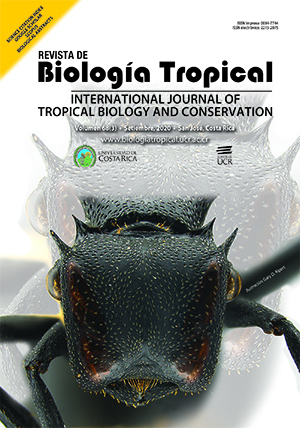Abstract
Abstract. Historical precipitation reconstruction of El Cielo Biosphere Reserve, Mexico, using Taxodium mucronatum (Cupressaceae) annual growth rings. Introduction: Historical knowledge of climate is essential to analyze its variability over time, as well as its impact on natural ecosystems and human populations. Objective: To analyze the annual growth of the sabino trees, also known as Ahuehuete trees (Taxodium mucronatum) from the Sabinas River to reconstruct the historical variability of precipitation in El Cielo Biosphere Reserve, Tamaulipas, Mexico. Methods: The annual growth of 116 sabino samples was dated to develop a chronology of 544 years (1474-2017). The period that admitted a series of samples suitable for climate analysis extends from 1550 to 2017 (468 years). Results: Based on the analysis of the response function, it was determined that the winter-spring precipitation (November-May) significantly influenced the radial growth of sabinos in the study area (R= 0.77, P < 0.001). The reconstruction recorded high climatic variability at interannual and interdecadal levels, in which the presence of droughts was identified at the beginning and end of each century, as well as the presence of extreme cyclical droughts every 50 years. These droughts stood out for their social and economic impact at the regional and national level. The most important droughts are the “Año Uno Conejo” (“Year One Rabbit”) according to the Aztec calendar in 1558. In 1696 with a strong impact in Northern Mexico. “El Año del Hambre” (“The Year of Hunger”) in 1785-1786. Also, the drought of 1801 that brought alongside food shortages. 1951 within the period of “Mass migration of the rural sector”; and the most recent drought, recorded in 2011. The most representative extreme rainfalls occurred in 1756 and 1816. Conclusions: If the precipitation pattern registered at El Cielo Biosphere Reserve continues, it is possible to expect the presence of extreme droughts in the mid and late 21st century.
##plugins.facebook.comentarios##

This work is licensed under a Creative Commons Attribution 4.0 International License.
Copyright (c) 2020 José Antonio Osorio-Osorio, Claudia Cecilia Astudillo-Sánchez, José Villanueva-Díaz, Leroy Soria-Díaz, Virginia Vargas-Tristán


